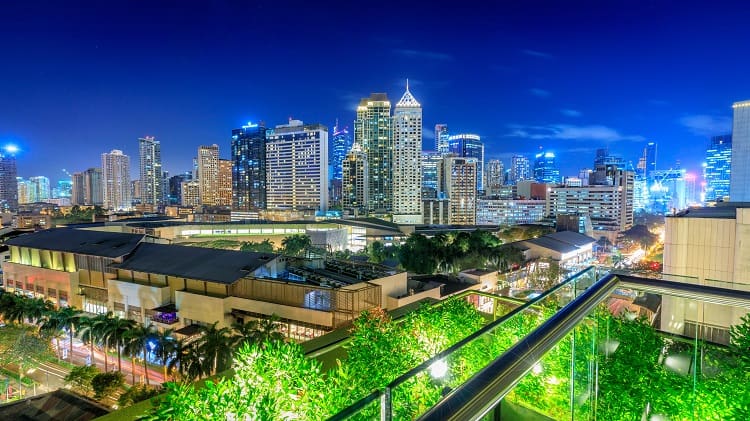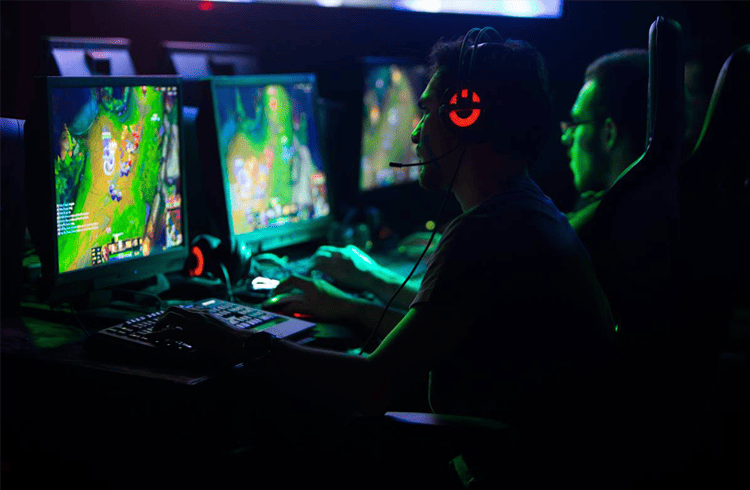Smart Cities – The Frontier for Smart Regions in the Philippines
Like technology, concepts such as smart cities and its term may float around for years before it gains traction. When it does gain traction, it unravels like lightning; quickly materializing in so many variation and formats – all derivatives from the concept.

Imagine hosting the latest technologies and innovative works as a staging ground in your town or municipality. That line of thought is where the idea of smart cities came to be. It is about breaking down the communication barriers between local governance and its civic subjects, through bypassing traditional processes in favor of an innovation-driven culture to pave the way for a “smarter” way of living, working and doing things.
With the recent inclusion of Makati as among the top innovative idea hubs in the Smart City Awards in Barcelona, the reality of smart cities are here as we begin to rethink a city’s structure, function and its very concept. Years prior, the ASEAN Smart Cities Network named Manila, Cebu and Davao as among the smart cities pilot of the Southeast Asian region. Like technology, concepts such as smart cities and its term may float around for years before it gains traction. When it does gain traction, it unravels like lightning; quickly materializing in so many variation and formats – all derivatives from the concept.
To date, Bonifacio Global City in Taguig and Clark Global Cities in Angeles, Pampanga are aspiring to be pioneering smart cities in the country. These cities are relatively young, but have developed rapidly over the years – what started as niche IT & BPO Hubs, became important districts for business and commerce that sports modern infrastructure and are governed with government e-services.
Digital Cities & Livable Cities
From the concept of Smart Cities, there are the two adjacent city classifications that come with their own respective index for measurement and score card determinants.
First are the Digital Cities that are defined as cities that are at the forefront of adopting digital services to their governance, administration and information management. These digital cities are connected and utilize fibre optic networks to achieve gigabit broadband speeds. Equipped with high broadband speeds, the constant transmission of data and information are then collected as insights to craft new policies and administrative decisions that are backed up by data. Other factors that determine digital city status include cyber-security, internet & telecommunications technology and digital literacy of the population. In the Philippines, the roadmap and parameters of digitalization are compiled under the DigitalCitiesPH website under the collaborative efforts of IT and Business Process Association of the Philippines (IBPAP) in partnership with the Department of Information and Communications Technology (DICT) and with the assistance of the National ICT Confederation of the Philippines (NICP). The website features a detailed and interactive map of key Philippine cities, municipalities and regions that displays their human capital skill & educational attainment, existing infrastructure, local business climate and key digital parameters. The website can be used as a guide by prospective investors and business groups in planning their ventures to the Philippines and its regions.
Second are the Livable Cities whose eligibility criteria are determined by the quality of life by its population. The term is made prominent by the annual Global Liveability Index by the Economist Intelligence Unit where factors such as stability, healthcare, education and infrastructure determine the Top 140 Livable Cities. This year, Japanese cities of Tokyo and Osaka made it to the top 10. Australian cities such as Melbourne, Sydney and Adelaide also made it to the top 10.

The website, LiveableCitiesPH, is a dashboard and insight driven website that utilize open data that statistically and visually display the insights, performance and trends of the many cities in the Philippines. The website also points out a positive challenge to city leaders, civil groups and local government officials to develop a liveable city framework through the resources featured in the website. The challenge, officially known as the Liveable Cities Challenge, places emphasis on raising the quality of life in Philippine cities based on the variables of GovTech e-Government, resiliency of safety structures, Mobility on traffic & transportation and the effectiveness of basic services in the city.
Going Beyond Smart Cities
With the dawn of a new decade, we think of possibilities and innovative potential to outweigh the modern challenges facing our cities:
- Continuous economic development
- Sustainability of the urban infrastructure
- Environmental impact
- Mobility and accessibility
- Quality of life
- Efficiency of governance
- Civic and Social governance
These variables are often the basis of score card for evaluating smart cities and these indexed variables can be used to measure something bigger in scope: smarter regions. The idea of smart cities must not fall into a capsulized entrenchment where development could be solely focused and be limited in an urban area.
We need to think bigger and even smarter to further the impact of an innovation-driven culture where it will be largely encompassing; by seeing things as a fundamental collective classified under regions.
The Philippine archipelago consists of over 7,000 islands with the three principal islands of Luzon, Visayas and Mindanao. To effectively govern these provincial municipalities, these provinces were organized under administrative regions.
The many regions in the Philippines feature a natural diversity that profoundly impacts identity, culture and economic output. The factors of regional identity, culture and economic state are rich minerals for the seedbed of what I call smart regions of the Philippines.
Smart Region Use Case
Last year, the city of Bacolod under the Western Visayas region was the host of the province’s first Blockchain Workshop: Bacolod Blockchain Initiative (B2Ci). In the workshop, the many potential use cases of Blockchain were detailed:
- Blockchain for Hospital Medical Record Management
- Blockchain for Better Patient Experience in Public & Private Hospitals
- Blockchain for Tracking Medicine and Pharma Authenticity
- Blockchain Digital Identities
- Blockchain for Student and Professional Credential Keys
- Blockchain for Administration for Civic Governance
- Blockchain as a College or University Elective
- Blockchain for Professional Certification
Under smart regions, the catalyst will be emerging technologies with high development impact for the economy. Technologies such as Blockchain, the Internet of Things (IoT) and Automation are reshaping the cities around the world and sooner or than later, regional cities or towns will need to adopt these technologies for practical purposes in order to keep in pace with development.
I have spent considerable time in Bacolod and Negros and have become fond of its unique culture and heritage. From the very delectable entrée of Chicken Inasal from the world-renowned Ilonggo cuisine, to the famed products made from sugar cane, I can imagine Negros Occidental and Negros Oriental developing its smart cities towards smart regions with the following developmental scenarios:
Administration and Governance
- Utilizing Blockchain for efficiency of administration
- Use of Blockchain as an audit trail for fiscal tracking
- Use of Blockchain public transactions for public transparency
- Use of e-services to facilitate better social services
Business and Economy
- Implementation of digital wallets and currency to expand means of commerce
- Use of Blockchain platforms for cost-effective modernization of regional and rural banks
- The implementation of modern farming concepts for agricultural products such as sugar cane and others.
- Fostering the adoption rate of new technologies for local businesses and startups.
Education and Workforce Training
- Instilling emerging technologies into the core curriculum on local education
- Integration of circuitry and board programming for smart devices for skill development institutions.
- Upskilling the workforce of local governance, professionals and students with modern skills such as programming and interface management.
Infrastructure and Mobility
- Adoption of structural integrity for buildings and commercial spaces
- Use of sensors for public safety and traffic governance
- Improving CCTV surveillance and risk management capacities
Quality of Life and Sustainability
- Use of sustainability index guides for environmental guidance and footprint management
- Use of sensors for water and sewage monitoring
- Adoption of hybrid cars for reduction of carbon footprint
- The use of smart farming to boost agriculture production and sustainability
- Modernization of private and public hospitals through Blockchain enabled EHR systems
The 2020 decade will be known as the second roaring twenties and for us, living in such times, we face bigger challenges compared to our predecessors. But with the principle of dreaming bigger and thinking bigger, the mindset of smarter regions for the Philippines will help set us as a nation for an inclusive economic development framework where the idea is no region is left behind.
Much like dreams or aspirations, the ambition of Philippine cities to be smart cities or smart regions will be attained through a collective and organized alliance of key participants. First and foremost, initiatives will need the critical support of the government for a smart city project framework. Key participation by business groups, technology providers and academe on statistical science will also be crucial to procure the necessary solutions to attain each milestone. Last but not least, the city or region will need to nurture its young minds in order to develop their capabilities to be a future leader or pioneer when it comes to economic, research & development and information and communications technology. The quest to develop a smart city status is no light undertaking as it encompasses coordinated development with continuity contingencies that span the succession of administrative officials.
As we are at the frontier of a new decade, the time to get organize and aspire for smarter cities is now.
This article is contributed to BitPinas: Smart Cities – The Frontier for Smart Regions in the Philippines





